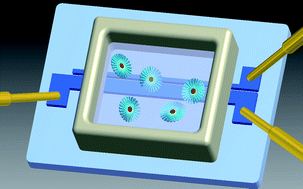Organic electrochemical transistors monitoring micelle formation†
Abstract
Organic electrochemical transistors (OECTs) exploit electrolyte gating to achieve the transduction of ionic currents. Therefore, they are ideally suitable to sense different chemo/bio species dissolved in the electrolyte. Current modulation in OECTs relies on doping or dedoping of the OECT channel by electrolyte ions. Nevertheless the role played by the specific physicochemical properties of an electrolyte on OECT operation is largely unknown. Here we investigate OECTs, making use of aqueous solutions of the micelle-forming cationic


 Please wait while we load your content...
Please wait while we load your content...